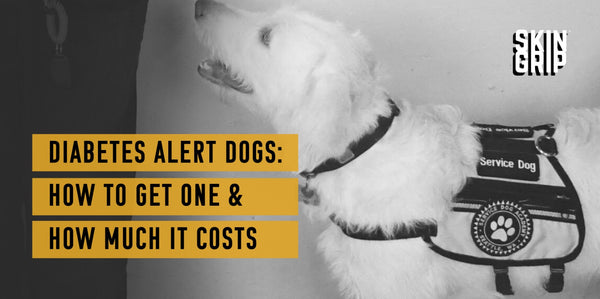
*Disclaimer: All content and information in this blog is for informational and educational purposes only.
Diabetes alert dogs (DADs) are specially trained service dogs that can support people with diabetes. These service dogs can detect when blood sugar levels are too high or too low through the scent changes that happen to your breath, saliva, or sweat. While diabetes alert dogs aren’t a replacement for checking blood sugar levels, they can be a potential safeguard for those who don’t experience any symptoms with high and low blood sugars. Oftentimes, DADs can detect changes in blood glucose levels sooner than continuous glucose monitors.
Common Breeds for Diabetes Alert Dogs
The most common dog breeds for diabetes alert dogs that come from a training school typically include:
- Golden retrievers
- Labrador retrievers
- Mixed sporting dog breeds
- Poodles
Don’t worry, this doesn’t count out your furry friend at home! You can train your dog at home to become a diabetes alert dog, but they must meet certain criteria when they are evaluated in order to be considered.
What to consider before getting a diabetes alert dog
When considering a DAD, it is important to consider the long-term investment you are making. In terms of expenses, some health insurances may cover a service dog but for the most part they cost between $8,000-$20,000 out-of-pocket for training. This does not include the cost of food, veterinary care and other expenses associated with caring for your dog over the course of their lifetime. Additionally, service dogs must continue to receive training even after they graduate from their training program. Ever hear of the saying, if you don’t use it, you lose it? It is true for service dogs because if they aren’t actively working or training, they may start to lose their skillset overtime. Actively training your service dog is a big time commitment to make, but ensures that they are keeping their abilities up to date.
How to get a diabetes alert dog
There are a number of professional organizations that you can contact to find out more about getting set up with a diabetes alert dog. Many of these organizations have online applications where you fill out basic information like your medical history, letter of reference, and personal information. The selection process varies between organizations, but it can be quite extensive as the average wait time is between 6-18 months.
Here are some Diabetes Alert Dog organizations:
- Diabetes Alert Dogs of America
- Dogs4Diabetics
- Early Alert Canines
- Medical Mutts
- Canine Partners for Life
- CedarOak Kennels
If you want to learn more about diabetes service dogs, consider looking into Assistance Dogs International for accredited organizations near you.






























